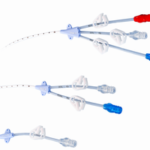CVC Insertion Classes for all Disciplines
We build teams and programs all across the US. Some of our smaller facilities may have one or two inserters. We can teach you to be the expert in vascular access and learn to place all devices from the PIV

We build teams and programs all across the US. Some of our smaller facilities may have one or two inserters. We can teach you to be the expert in vascular access and learn to place all devices from the PIV

They are here and ready for your review. CVC Health Care was proud to be a reviewer for these standards. When we all standardize best practice we are more successful as a team and we can support one another all

We have been building and promoting the use of vascular access teams all across the US for several years now. We know the value these teams bring to facilities, such as reduced supply costs and reduced health care workers time

Thank you All at GAVeCeLT The Vascular Access Experts from Italy. This is a long read but well worth you time. Contact CVC Health Care if you would like a pdf copy. April 5th, 2020 Edited by Mauro Pittiruti, Fulvio

Managing vascular access devices for patients in source isolation Posted by Gillian Ray-Barruel on 1 April 2020 Now more than ever, many of us are caring for sick patients requiring source isolation for infectious (e.g. SARS-CoV2 [COVID-19]) or multi-resistant organisms

We educate all across the US on insertion of ultrasound guided devices from IV’s, Midlines and PICC’s. The most important process we teach is “Which device” should I place? Device Selection for IV therapy is the first step in the

Champions for the Cause: Using the TAP Strategy to Identify Gaps in Preventing HAIs We have been teaching the importance of building vascular access teams and programs for many years. It is crucial to have a multidisciplinary team that works collaboratively

When visiting hospitals and other health care settings, one can become much more vulnerable to catching infections. Unfortunately, patients are susceptible to this as well, and about 75,000 in hospitals die each year as a result of these infections. These infections

The Centers for Disease Control and Prevention recently published the 2016 Healthcare-Associated Infection Progress Report (HAI Progress Report). This is a report that presents progress on the prevention of key healthcare-associated infections with an effort to highlight progress and also uncover

Published by the Society of Critical Care Medicine Takashima, Mari, RN, BN, Grad Cert ICU, MEpi1; Schults, Jessica, RN, GCert (Specialist Paed), MAppSci (Research)1,2,3; Mihala, Gabor, MEng, GCert(Biostats)1,4,5; Corley, Amanda, RN, BN, GradCertHSci, MAdvPrac (Research)1; Ullman, Amanda, RN, MAppSci, PhD,